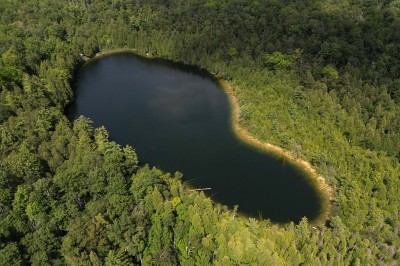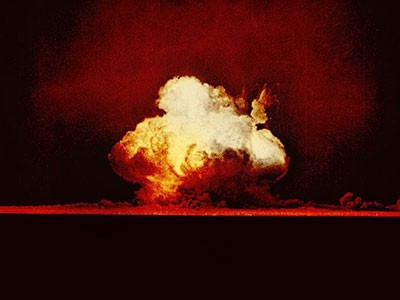After 15 years of discussion, geologists last week decided that the Anthropocene — generally understood to be the age of irreversible human impacts on the planet — will not become an official epoch in Earth’s geological timeline.
The rejected proposal would have codified the end of the current Holocene epoch, which has been in place since the end of the last ice age 11,700 years ago. It suggested that the Anthropocene started in 1952, when plutonium from hydrogen-bomb tests showed up in the sediment of Crawford Lake near Toronto, Canada.
The vote has drawn controversy over procedural details, and debate about its legitimacy continues. But whether or not it’s formally approved as a stratigraphic term, the idea of the Anthropocene is now firmly rooted in research. So, how are scientists using the term, and what does it mean to them and their fields?
‘It’s a term that belongs to everyone’
As head of the Leverhulme Centre for Anthropocene Biodiversity at the University of York, UK, Chris Thomas has perhaps more riding on the term than most. “When the news of this — what sounds like a slightly dodgy vote — happened, I sort of wondered, is it the end of us? But I think not,” he says.
For Thomas, the word Anthropocene neatly summarizes the sense that humans are part of Earth’s system and integral to its processes — what he calls indivisible connectedness. “That helps move us away from the notion that somehow humanity is apart from the rest of nature and natural systems,” he says. “It’s undoable — the change is everywhere.”

Geologists reject the Anthropocene as Earth’s new epoch — after 15 years of debate
The concept of an era of human-driven change also provides convenient common ground for him to collaborate with researchers from other disciplines. “This is something that people in the arts and humanities and the social sciences have picked up as well,” he says. “It is a means of enabling communication about the extent to which we are living in a truly unprecedented and human-altered world.”
Seen through that lens, the fact that the Anthropocene has been formally rejected because scientists can’t agree on when it began seems immaterial. “Many people in the humanities who are using the phrase find the concept of the articulation of a particular year, based on a deposit in a particular lake, a ridiculous way of framing the concept of a human-altered planet.”
Jacquelyn Gill, a palaeoecologist at the University of Maine in Orono, agrees. “It’s a term that belongs to everyone. To people working in philosophy and literary criticism, in the arts, in the humanities, the sciences,” she says. “I think it’s far more meaningful in the way that it is currently being used, than in any attempts that stratigraphers could have made to restrict or define it in some narrow sense.”
She adds: “It serves humanity best as a loose concept that we can use to define something that we all widely understand, which is that we live in an era where humans are the dominant force on ecological and geological processes.”
Capturing human influences
The idea of the Anthropocene is especially helpful to make clear that humans have been shaping the planet for thousands of years, and that not all of those changes have been bad, Gill says. “We could do a better job of thinking about human–environment relationships in ways that are not inherently negative all the time,” she says. “People are not a monolith, and neither are our attitudes or relationships to nature.”
Some 80% of biodiversity is currently stewarded on Indigenous lands, Gill points out. “Which should tell you something, right? That it’s not the presence of people that’s the problem,” she says. “The solution to those problems is changing the way that many dominant cultures relate to the natural world.”
The concept of the Anthropocene is owned by many fields, Gill says. “This reiterates the importance of understanding that the role of people on our planet requires many different ways of knowing and many different disciplines.”

Humans versus Earth: the quest to define the Anthropocene
In a world in which the threat of climate change dominates environmental debates, the term Anthropocene can help to broaden the discussion, says Yadvinder Malhi, a biodiversity researcher at the University of Oxford, UK.
“I use it all the time. For me, it captures the time where human influence has a global planetary effect, and it’s multidimensional. It’s much more than just climate change,” he says. “It’s what we’re doing. The oceans, the resources we are extracting, habitats changing.”
He adds: “I need that term when I’m trying to capture this idea of humans affecting the planet in multiple ways because of the size of our activity.”
The looseness of the term is popular, but would a formal definition help in any way? Malhi thinks it would. “There’s no other term available that captures the global multidimensional impacts on the planet,” he says. “But there is a problem in not having a formal definition if people are using it in different terms, in different ways.”
Although the word ‘Anthropocene’ makes some researchers think of processes that began 10,000 years ago, others consider it to mean those of the past century. “I think a formal adoption, like a definition, would actually help to clarify that.”







